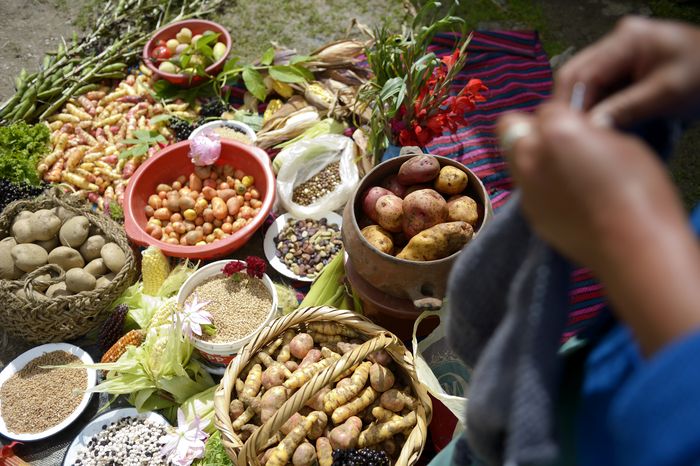Even though Latin America is thousands of kilometres away, people are beginning to feel the adverse effects of the Russian War on Ukraine. Increasing energy costs and shortages of cereals and fertilizers, for which Ukraine, Russia and Belarus are the largest producers are leading to higher prices for food also in Latin America. This is also harming the still fragile re-start of tourism in the region. Under this new scenario, what options does tourism have to adapt to these new challenges?
Russian war effects on food prices in Latin America
In the case of wheat, many countries such as Bolivia, Argentina, Brazil and others cultivate the product themselves, but they are additionally importing from international markets. Therefore, they are struggling with the pressure of the higher international prices. According to FAO, the prices of agricultural products are increasing rapidly. Since the Russian invasion, the prices reached historic records. Today the cereal price index lies 56.2% above the value a year ago. Consequently, flour has already registered an increment in prices. In Bolivia, the price rose 27% in only four months, between March and June. In Argentina, the prices in May alone arose by 10.5%. An increasing flour price inevitably leads to rising costs for derivatives such as pasta, bread and baked goods.
The provision of fertilizers is another point of concern in the region. Fertilizers are usually applied to grow a wide variety of agricultural crops. In Bolivia, they are used for potato, corn, tomato, onions and others. Other countries use them to cultivate coffee, maize and beans among others products. Less fertilizers leads to lower production quantities and as a result also to increasing prices. In Latin America, various countries are linked to the imports from Russia, including large economies such as Brazil, Mexico and Colombia. As a consequence the harvest will be smaller and prices for local products will increase.
Tourism in Latin America: Opportunities and challenges
Before COVID-19 pandemic, tourism was a driving sector of the economy in Latin America. It contributed 8.2% to the regional GDP and provided 17 million jobs (8% of the employment in the region). During the pandemic, the sector was heavily hit. In 2021, South America received 78% less international tourists in comparison to 2019 and was thus one of the regions in the world where the tourism sector was hit hardest by the pandemic.
New challenges, like to increasing food prices, are hitting a tourism sector, which has barely any energy left to cope with another crisis. However, there is no other option. The new situation with higher prices for food and fertilizers, amplify the necessity to work on strategies to reduce food waste in the hotel sector and to develop new pathways for local production and procurement, which is less dependent from international sources.
Adaptation strategies to the new normal
An important part of an adaptation strategy is to transform consumption patterns of food in tourism. Restaurants and hotels with a menu based on wheat products, pasta and bread already had to increase prices significantly, because their purchase costs increased. Companies with local suppliers and a variety of local products can more easily combine or substitute products. A local restaurant owner in Sucre, Bolivia told me that she was not yet forced to increase prices, because she was able to adapt her menu to the new situation. Starting to cooperate with small-scale organic producers, could be an attractive option for a tourism company to promote experienced-based tourism that protects ancestral practices to cultivate crops and uses traditional receipts of the grandparents to prepare food for the visitors.
In recent years, programmes such as the ‘Manqa-Schools’ are changing the food circuits in Latin America. The first Manqa School was established in 2014 in El Alto, Bolivia with the objective to create employment, promote entrepreneurship and re-valuate rural areas. Young people receive an integral formation in gastronomy; they learned the basics of healthy products and the importance to reduce food waste. Until 2021, 6.000 young people graduated as chefs – not only in Bolivia, but also in Colombia and Honduras, where the school model was replicated. Gastronomic schools, such as the Manqa-schools are reshaping eating patterns in the gastronomy sector, they are reducing food waste in the tourism sector and ensure food-security for the population.
Another alarm call to transform the tourism food circuits
The Russian war on Ukraine and the consequences for the global food system are another alarm call to reconfigure the food sourcing worldwide – including in the hospitality and gastronomy sector. In tourism it would be a win-win situation: Travellers could experience authentic cuisine and local traditions. Local value creation would benefit local farmers and hosting communities alike. Less food loss and food waste and regional agriculture would have positive effects on climate and biodiversity. Finally, tourism in general would increase its resilience, because it would reduce its vulnerability towards external shocks, on which local stakeholders in far-away countries have no influence on, such as the Russian War on Ukraine.
Emma Saavedra is a Project Coordinator in the Unity of Economy and Sustainability in Brot für die Welt. She supports the work of the Policy Advisors on the topics of Digitalization, Fair Trade and Tourism. Previously she has been working more than 10 years as Programme Officer in the field of agriculture and gender in Bolivia and Peru. She is Bolivian and since 2020 she lives in Germany.


